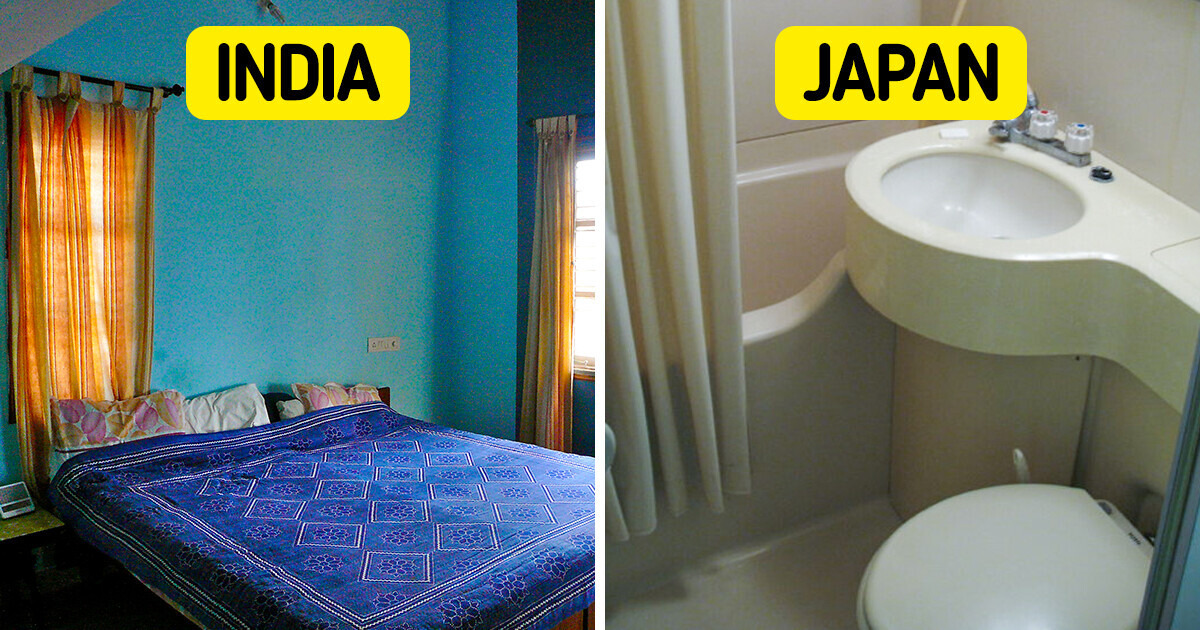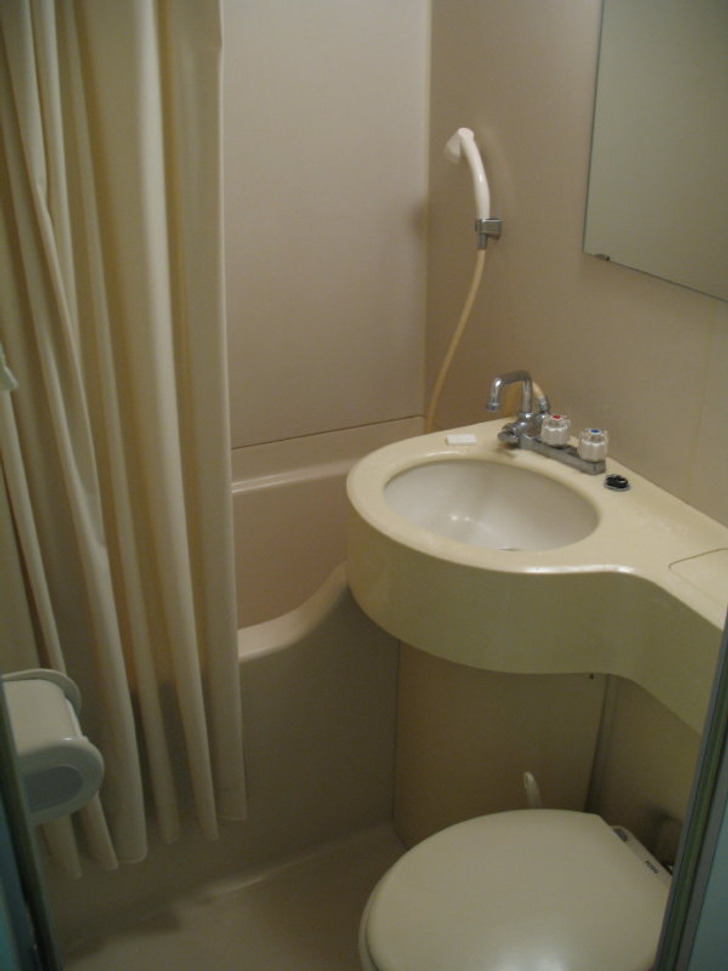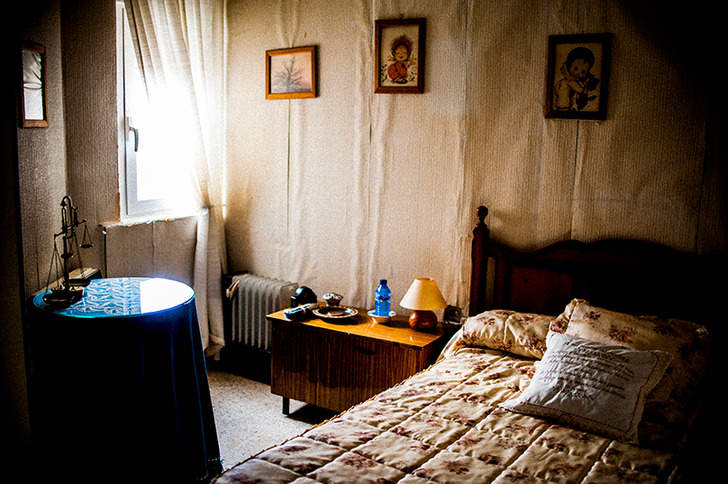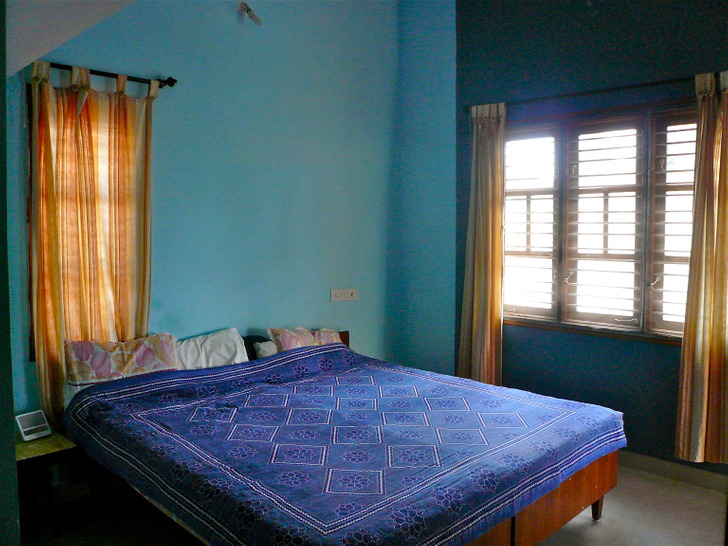
This Is What typical Homes From Around the World Really Look Like

We often see gorgeous homes and interiors in the movies or in glossy magazines and admire the design that went into these architectural masterpieces. Thanks to the mass media, we have a general idea of what the dwellings of people in different corners of the world look like. But rarely do we realize that what we see on the screen can differ greatly from the reality.
We here at Bright Side have done a little research and found out how people in different countries equip their dwellings.
Japan
Tokyo is one of the most expensive and densely populated cities in the world. That is why only wealthy people can afford to have spacious dwellings, while the vast majority of Japanese people live in tiny apartments.
The only room in the apartment is used as a bedroom, living room, and dining room. In the corner, you can see a refrigerator, and the only way to get to the balcony is to climb over the bed. However, the room is bright and well-lit, and this visually expands the living space.
Spain
Most Spaniards prefer to live in apartment blocks. Here is what the typical residential area in any Spanish city looks like.
Meals are usually served in the living room. Although Spanish apartments tend to have big kitchens, they are used exclusively for cooking.
Sweden
A typical residential area in Sweden looks like this.
One distinctive feature of the Swedish way of life is smart usage of basement areas. People often use it to store their bikes, to create a laundry room, or sometimes they even transform it into a gym.
Each apartment also has a storage locker in a special room in the basement. The apartment dwellers use them to store summer tires, skis, suitcases, and other seasonal or less important things. The balconies are used as a rest area.
Great Britain
Most English people try to avoid living in blocks of flats. They prefer to live on the outskirts of the city in houses like these.
Given that central heating isn’t installed in all buildings, British people try to do their best to prevent interior heat from escaping. Carpet in every room, draft stoppers, blankets and, of course, a fireplace are the necessary elements of most houses in Great Britain. And possibly the most unusual thing — the faucets on sinks in the UK usually have separate hot and cold controls.
South Korea
More than 80% of the Korean population lives in high-rise apartment buildings. One distinctive feature of Korean apartment blocks is the huge building number that is visible from afar.
The apartments in Korea are usually small. However, the rooms are very bright thanks to large windows. One thing that may seem unusual to most people is the absence of a bathtub or a separate shower. They are replaced by a simple drain on the bathroom floor.
Australia
Australians are notoriously fond of living in their own houses, but a growing number of residents choose to live in apartment blocks.
Most Australians live in big houses with three bedrooms. The average home size in this country is about 80 — 120 square meters. Apart from bedrooms, the typical house features a living room, kitchen, bathroom, two toilet rooms and a garage. Some households also have a small laundry room and one more living room. All doors are usually made of glass.
India
If a family is relatively wealthy, they have a big house with many rooms. Such homes are usually two stories high with a big backyard.
Cuba
In Cuba, houses are mainly made of concrete and have 1 or 2 stories. Most homes here have no glass windows. Instead, people use wooden or metal shutters.
If you enter a house in Havana (especially in the downtown area of the capital city), you will be amazed at how beautiful the interior is. Built in the Colonial style, with high ceilings and antique furniture, these homes seem to be real masterpieces.
USA
The distinctive feature of the design concept of American homes lies in the fact that the interior should look both cozy and expensive. The layout of most houses is clearly designed to make visitors stay in the front area of the house (that usually looks the most beautiful) and to hide bedrooms from prying eyes.
Comments

Sorry
no
To set the record straight about Japan. What people think of as "Tokyo" is actually a collection of 23 "wards" or "boroughs", sort of like the 5 boroughs of New York City. Once you start moving away from that area, especially towards the north/northeast, rent decreases and living space increases. In my city, about 40 miles away from Tokyo Station, I bought an older 2-story, 3-bedroom house, with a 30ft X 9ft garden, for around US$160,000. There is dependable bus and train transportation to Tokyo, which takes around an hour or so, depending on where you want to go in Tokyo. You can get a decent family-oriented apartment here for around US$600/month, or less than that if you're living alone or just with your sweetie.
re
Related Reads
20 Times People Found Absurdly Creative Ways to Make Life Easier

30 Photos Showing How Members of Different Professions Have Changed Over the Last 100 Years

A British Photographer Takes Honest Wedding Photos, and You Might Regret You Didn’t Invite Him to Your Celebration

15 Touching Stories That Can Bring Tears to Your Eyes

A Woman and Girlfriend Who “Looks Like a Child” Keep Going Strong, Proving Love Always Wins

17 People Who Got a Pet and a Headache as a Bonus

How They Relieve Themselves on Duty and 7 More Facts the Queen’s Guards Shared About Their Job

14 Unresolved Nanny Stories That Keep Us Guessing

12 Stories So Wild They Might Break the Internet

I Absolutely Refuse to Leave Inheritance to a Family That Treats Me Like an ATM

I Share My Husband With His Ex-Family—I’m Done

I Refused to Beg My DIL for Forgiveness—Then Suddenly She Needed Me



